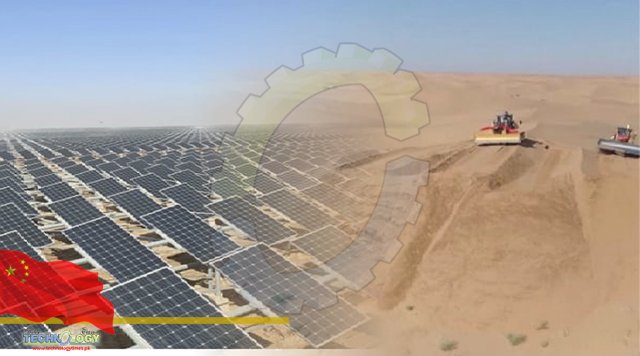China started building its largest photovoltaic power base in desert in the northwestern Ningxia Hui Autonomous Region on Friday.

The photovoltaic power base, with a total installed capacity of about three gigawatts (GW), is constructed in the Tengger Desert in Zhongwei City of Ningxia, which is the fourth largest desert in China, with an area of about 43,000 square kilometers. largest photovoltaic power base in desert, When completed, the project will generate about 5.78 billion kilowatt-hours (kWh) of electricity per year, saving 1.92 million tonnes of standard coal and reducing carbon dioxide emissions by about 4.66 million tonnes annually. With a total investment of 15.25 billion yuan ($2.2 billion), it will generate an annual revenue of about 1.5 billion yuan once completed and provide 1,500 jobs. Ningxia, with its high altitude and long sunlight hours, has rich solar energy resources. It’s one of the five provinces in China that are most suitable for developing new energy.
Zhongwei City, located on the southeastern edge of the Tengger Desert, is one of the regions with the most abundant solar energy resources in China. In recent years, 111 new energy projects have been implemented in the city, and the total installed capacity of new energy there has reached 8.27 GW, accounting for nearly one third of that of Ningxia.China plans to build 450 GW of solar and wind power generation capacity on the Gobi and other desert regions, He Lifeng, director of the National Development and Reform Commision (NDRC), largest photovoltaic power base in desert, China’s top economic planner, said on the sidelines of the National People’s Congress in March. The country pledged to cap its carbon emission to a peak by 2030, and realize carbon neutrality by 2060. To achieve the goals, Chinese President Xi Jinping pledged at the UN Climate Change Summit in 2020 to boost the country’s installed capacity of wind and solar power to over 1,200 GW by 2030, and increase the share of non-fossil fuels in primary energy consumption to around 25 percent during the same period. By the end of 2021, the country had installed 306 GW of solar power capacity and 328 GW of wind capacity, according to data from the National Energy Administration.
Source: This news is originally published by cgtn